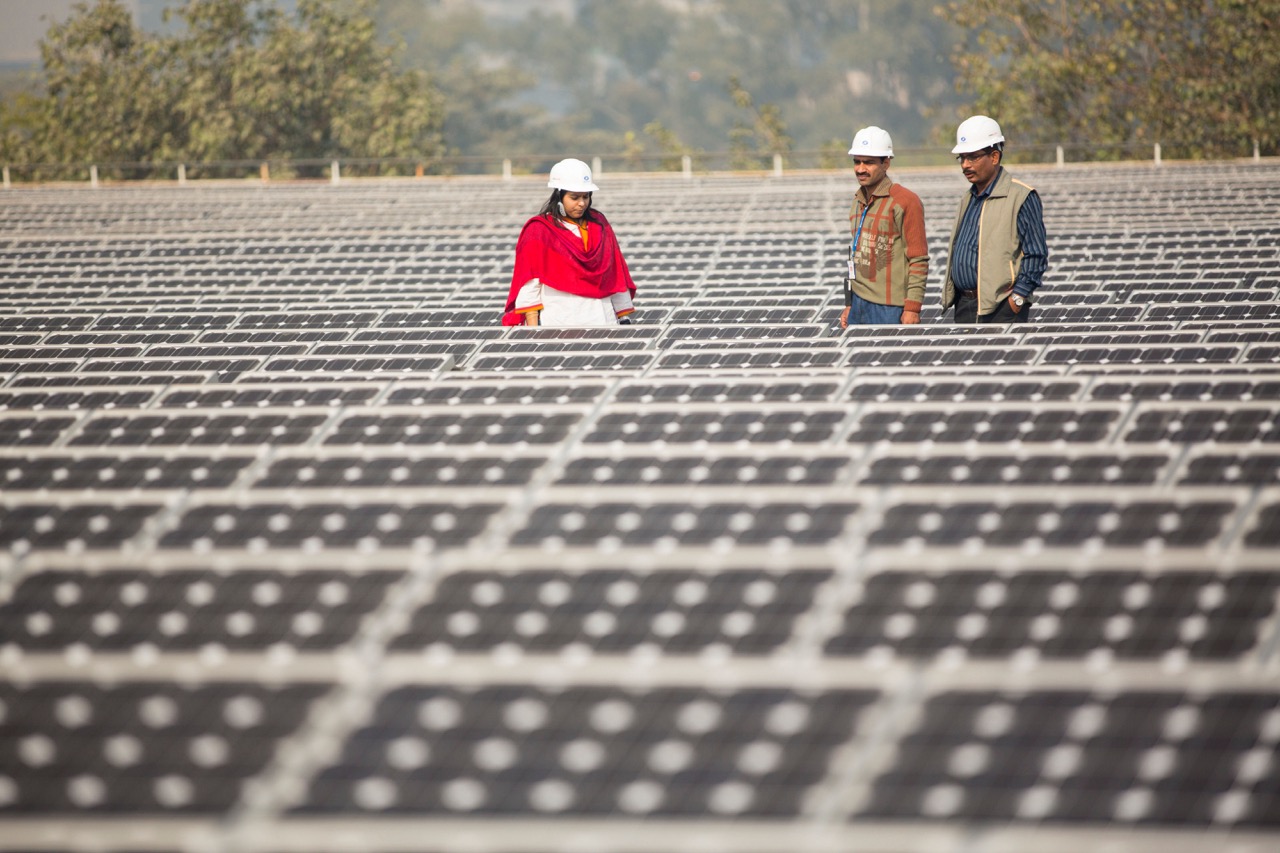The year sunlight went global: how the Paris Agreement brought solar power to the world – ember-energy.org

Report on Global Solar Energy Advancement and Contributions to Sustainable Development Goals
The International Solar Alliance: Fostering Partnerships for Sustainable Energy
The International Solar Alliance (ISA), under Indian leadership, exemplifies a commitment to SDG 17 (Partnerships for the Goals) through its South-South cooperation model. The initiative directly supports SDG 7 (Affordable and Clean Energy) by facilitating financial and technical resources for emerging economies.
- Affordable Finance at Scale Program: This program has allocated over $2 billion USD for solar projects, advancing access to clean energy.
- Global Solar Facility: Works to de-risk private investment, making solar projects more viable and attractive to the private sector.
- Primary Objective: In line with SDG 7 and SDG 13 (Climate Action), the ISA aims to mobilize $1 trillion in solar funding by 2030 to accelerate the global energy transition.
China’s Role in Accelerating the Global Transition to Clean Energy
China’s strategic development of solar power serves as a primary driver for achieving its climate commitments and contributes significantly to global progress on the Sustainable Development Goals.
Policy and Climate Action (SDG 13)
China’s expansion in solar capacity is directly linked to its national climate objectives, demonstrating a strong commitment to SDG 13.
- Initial Nationally Determined Contribution (NDC): Pledged to peak carbon emissions around 2030 and increase the non-fossil fuel share in primary energy consumption to 20%.
- Carbon Neutrality Target: The 2020 announcement of a carbon neutrality goal has solidified long-term market confidence and investment in renewables.
- Target Achievement: The national goal to install 1,200 GW of wind and solar capacity by 2030 was achieved in 2024, six years ahead of schedule.
Progress in Affordable and Clean Energy (SDG 7)
China has become the world leader in solar generation, fundamentally altering its energy landscape and contributing to global clean energy capacity.
- Generation Growth: Solar’s share of China’s electricity increased from 0.7% (40 TWh) in 2015 to 8.3% (839 TWh) in 2024, a 21-fold expansion.
- Energy Source Ranking: Solar power is now the fourth largest source of electricity in China, having surpassed bioenergy (2016), gas (2020), and nuclear (2022).
Industry, Innovation, and Economic Growth (SDG 9 & SDG 8)
China’s strategic industrial policies have fostered innovation and scaled up manufacturing, driving down global costs and supporting SDG 9 (Industry, Innovation, and Infrastructure) and SDG 8 (Decent Work and Economic Growth).
- ‘Top Runner’ Programme: Introduced in 2015, this initiative successfully upgraded the quality and efficiency of solar modules, enhancing global competitiveness.
- Manufacturing Dominance: China now accounts for 80-90% of global solar manufacturing. The number of Chinese companies among the top ten global solar module manufacturers rose from four in 2011 to eight by 2019.
- Export Scale: Exports of solar panels, cells, and wafers grew from a few gigawatts in 2015 to nearly 350 GW in 2024.
- Global Impact: The scale of China’s investment in production and innovation has been the primary cause of the significant decrease in global solar module prices, making clean energy more affordable worldwide and advancing SDG 12 (Responsible Consumption and Production).
SDGs Addressed in the Article
- SDG 7: Affordable and Clean Energy – The article’s primary focus is on the expansion of solar energy, a form of clean and increasingly affordable energy, in China and its promotion in emerging economies through the International Solar Alliance (ISA).
- SDG 13: Climate Action – The article explicitly links the growth of solar power to climate commitments, such as China’s goals to peak carbon emissions and achieve carbon neutrality, which were drivers for its solar development.
- SDG 17: Partnerships for the Goals – The role of the International Solar Alliance (ISA) is highlighted, emphasizing its South-South cooperation model, mobilization of finance, and efforts to de-risk private investment, all of which are forms of global partnership.
- SDG 9: Industry, Innovation, and Infrastructure – The article details China’s massive investment in solar manufacturing, technological innovation through programs like ‘Top Runner’, and the development of solar power infrastructure, positioning the country as a global leader in the industry.
Specific SDG Targets Identified
SDG 7: Affordable and Clean Energy
- Target 7.2: By 2030, increase substantially the share of renewable energy in the global energy mix. The article details China’s significant increase in solar power’s share of its electricity generation, from 0.7% in 2015 to 8.3% in 2024.
- Target 7.a: By 2030, enhance international cooperation to facilitate access to clean energy research and technology… and promote investment in energy infrastructure and clean energy technology. The article mentions the ISA’s role in channeling finance and expertise to emerging economies and its goal to mobilize $1 trillion in solar funding.
SDG 13: Climate Action
- Target 13.2: Integrate climate change measures into national policies, strategies and planning. The article states that China’s emission reduction commitments, its NDC (Nationally Determined Contribution), and its carbon neutrality target were significant drivers of its solar development, showing the integration of climate goals into national energy policy.
SDG 17: Partnerships for the Goals
- Target 17.3: Mobilize additional financial resources for developing countries from multiple sources. The article provides a concrete example with the ISA’s “Affordable Finance at Scale” program, which has allocated over $2 billion for solar projects, and the “Global Solar Facility” which works to de-risk private investment.
- Target 17.6: Enhance North-South, South-South and triangular regional and international cooperation on and access to science, technology and innovation. The article describes the ISA’s work as a “South–South cooperation model” that channels finance and expertise to emerging economies.
SDG 9: Industry, Innovation, and Infrastructure
- Target 9.4: By 2030, upgrade infrastructure and retrofit industries to make them sustainable, with increased resource-use efficiency and greater adoption of clean and environmentally sound technologies. The article describes China’s ‘Top Runner’ programme, which was introduced to upgrade the quality and efficiency of solar modules, and its massive investment in solar manufacturing, leading to a fall in global module prices.
- Target 9.b: Support domestic technology development, research and innovation in developing countries. The article highlights how China’s policies, like the ‘Top Runner’ programme, stimulated domestic innovation and manufacturing competitiveness, making it a world leader.
Indicators for Measuring Progress
For Target 7.2 (Increase renewable energy share)
- Implied Indicator: Share of solar energy in total electricity generation. The article provides specific data points for this: “solar generated 8.3% of China’s electricity (839 TWh) in 2024, a 21-fold expansion from 0.7% (40 TWh) in 2015.” This directly measures progress toward increasing the renewable energy share.
For Target 7.a (Promote investment in clean energy)
- Implied Indicator: International financial flows to developing countries for clean energy. The article quantifies this with figures like the ISA allocating “over $2 billion USD for solar projects” and the overall goal of “mobilising $1 trillion in solar funding by 2030.”
For Target 13.2 (Integrate climate measures into policy)
- Implied Indicator: Establishment of national climate change policies and targets. The article refers to China’s “initial NDC,” its commitment to “peaking carbon emissions around 2030,” and its “carbon neutrality target” as key policy drivers for solar expansion.
For Target 9.4 (Upgrade industries for sustainability)
- Implied Indicator: Investment in and output of clean technologies. The article points to China’s dominance in solar manufacturing, with “80-90% of global solar manufacturing” and exports increasing to “nearly 350 GW of panels, cells and wafers in 2024,” as evidence of industrial upgrading towards sustainable technology.
Summary Table of SDGs, Targets, and Indicators
| SDGs | Targets | Indicators (Mentioned or Implied in the Article) |
|---|---|---|
| SDG 7: Affordable and Clean Energy | 7.2: Increase substantially the share of renewable energy in the global energy mix.
7.a: Enhance international cooperation and promote investment in clean energy infrastructure and technology. |
– Share of solar in China’s electricity generation increased from 0.7% (2015) to 8.3% (2024).
– ISA allocated over $2 billion for solar projects and aims to mobilize $1 trillion by 2030. |
| SDG 13: Climate Action | 13.2: Integrate climate change measures into national policies, strategies and planning. | – China’s emission reduction commitments, NDC, and carbon neutrality target are cited as significant drivers for solar development. |
| SDG 17: Partnerships for the Goals | 17.3: Mobilize additional financial resources for developing countries.
17.6: Enhance South-South cooperation on science, technology and innovation. |
– The ISA’s “Affordable Finance at Scale” program has allocated over $2 billion.
– The ISA is described as operating on a “South–South cooperation model” to channel finance and expertise. |
| SDG 9: Industry, Innovation, and Infrastructure | 9.4: Upgrade infrastructure and industries to make them sustainable and adopt clean technologies.
9.b: Support domestic technology development, research and innovation. |
– China is home to 80-90% of global solar manufacturing and exports nearly 350 GW of panels.
– The ‘Top Runner’ programme was introduced to upgrade the quality and efficiency of solar modules. |
Source: ember-energy.org
What is Your Reaction?
 Like
0
Like
0
 Dislike
0
Dislike
0
 Love
0
Love
0
 Funny
0
Funny
0
 Angry
0
Angry
0
 Sad
0
Sad
0
 Wow
0
Wow
0
















































:focal(1500,1000)/https://media.globalcitizen.org/a6/9a/a69a4720-d8a1-4715-b596-18738d03c05c/rotary_polio_hero_image.jpg?#)







/countries/sri-lanka/photo-credit---dmc-sri-lanka.tmb-1200v.jpg?sfvrsn=dc298bcc_1#)

















